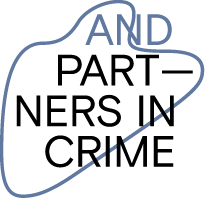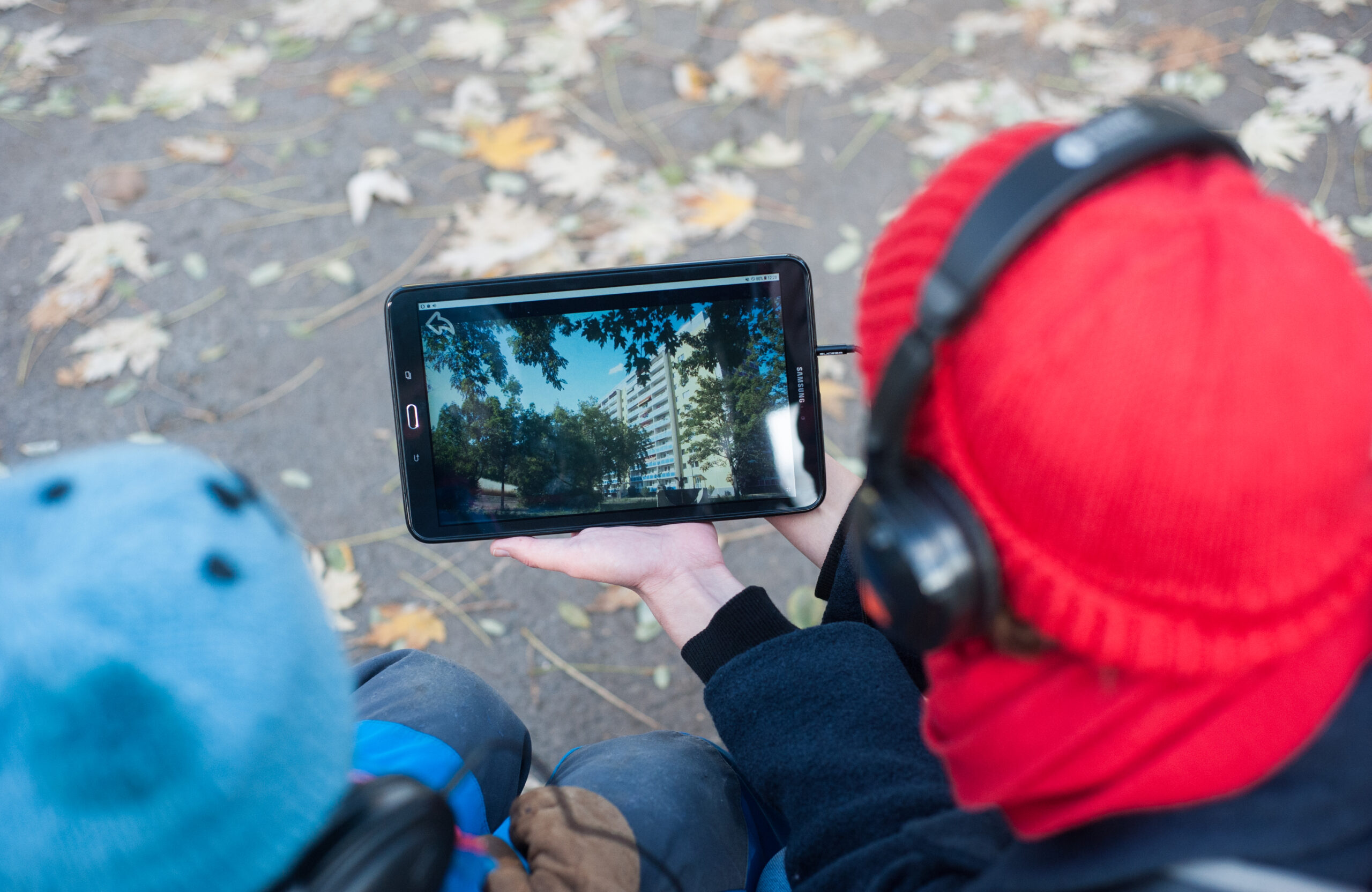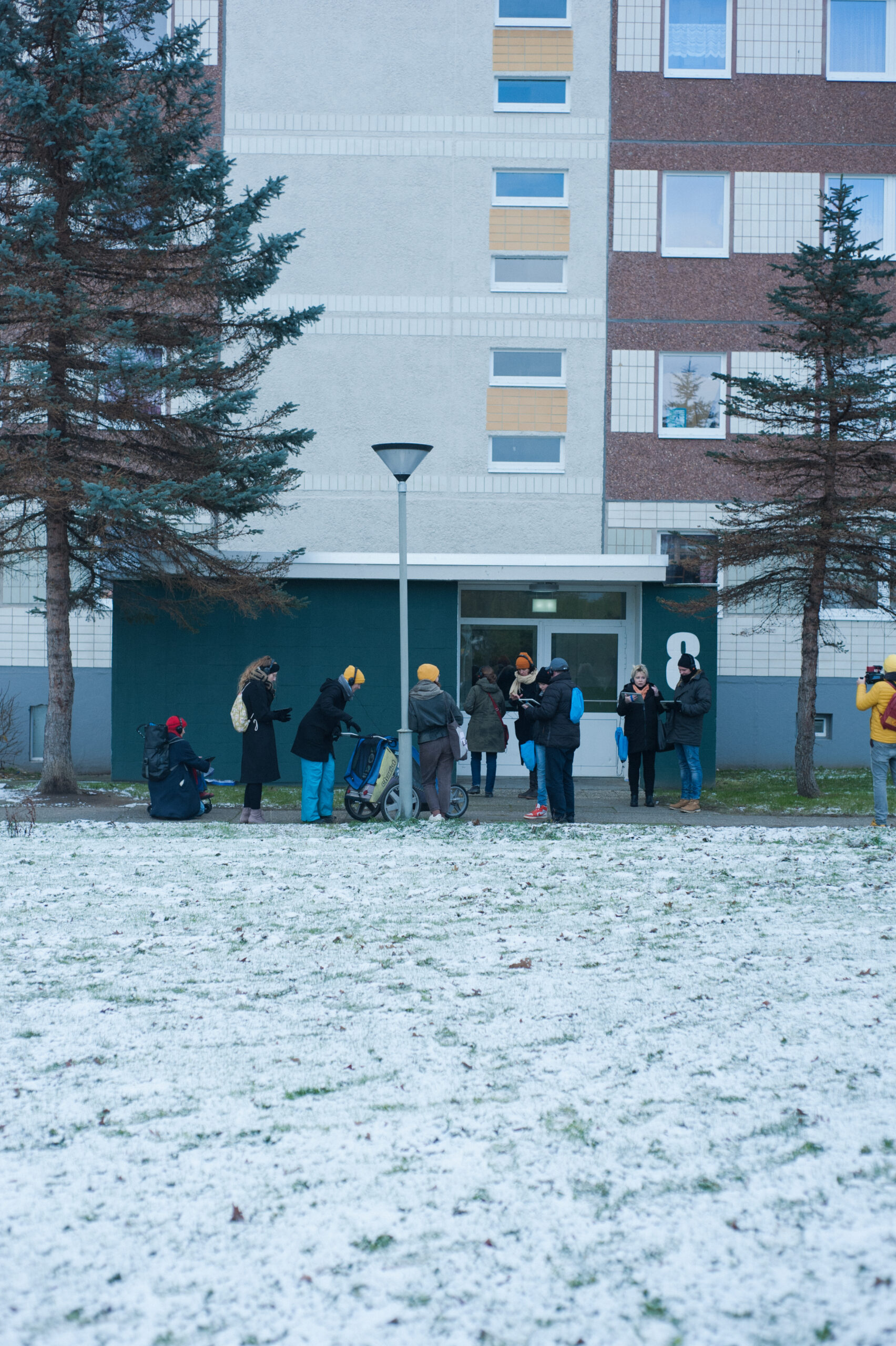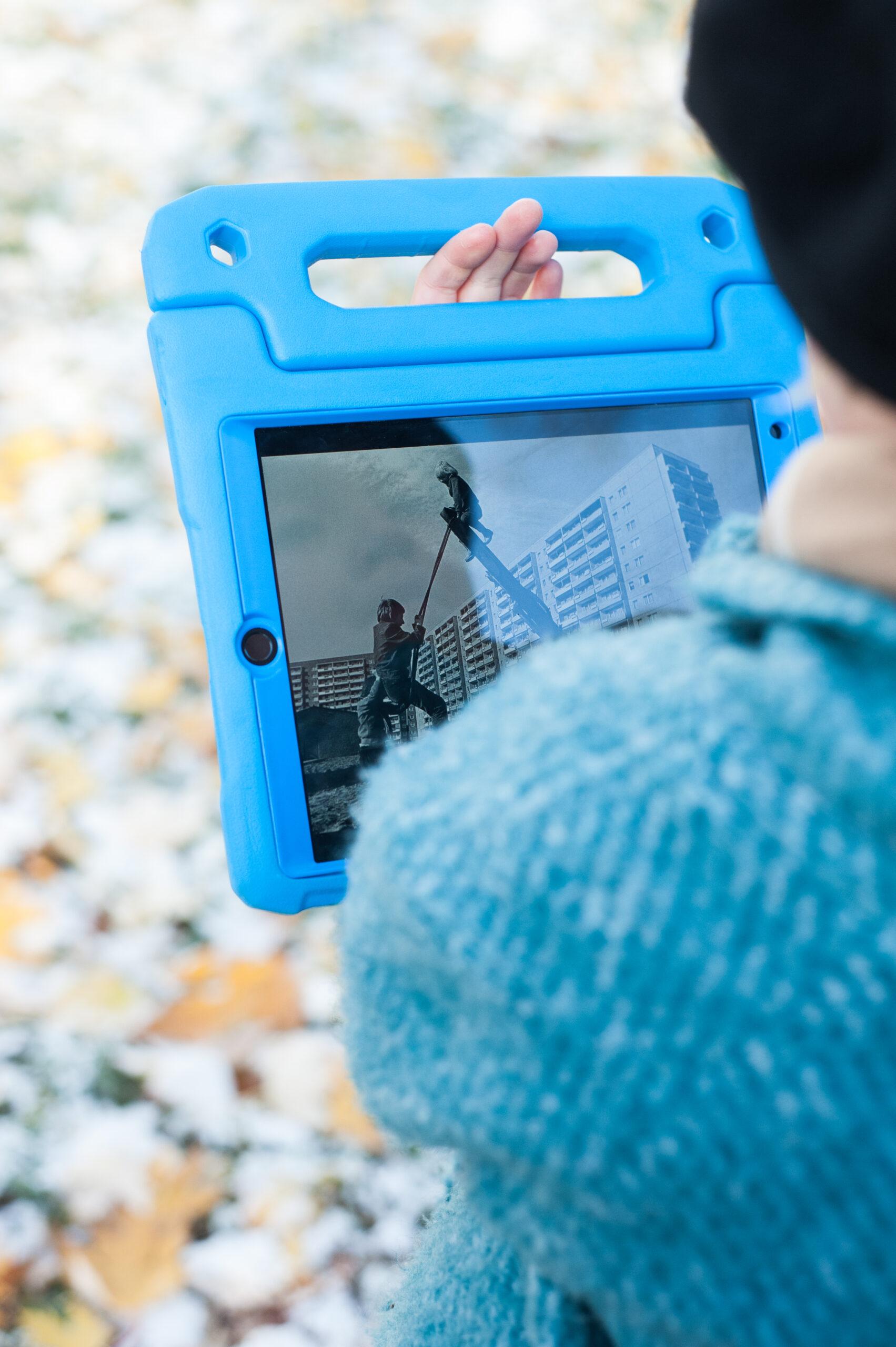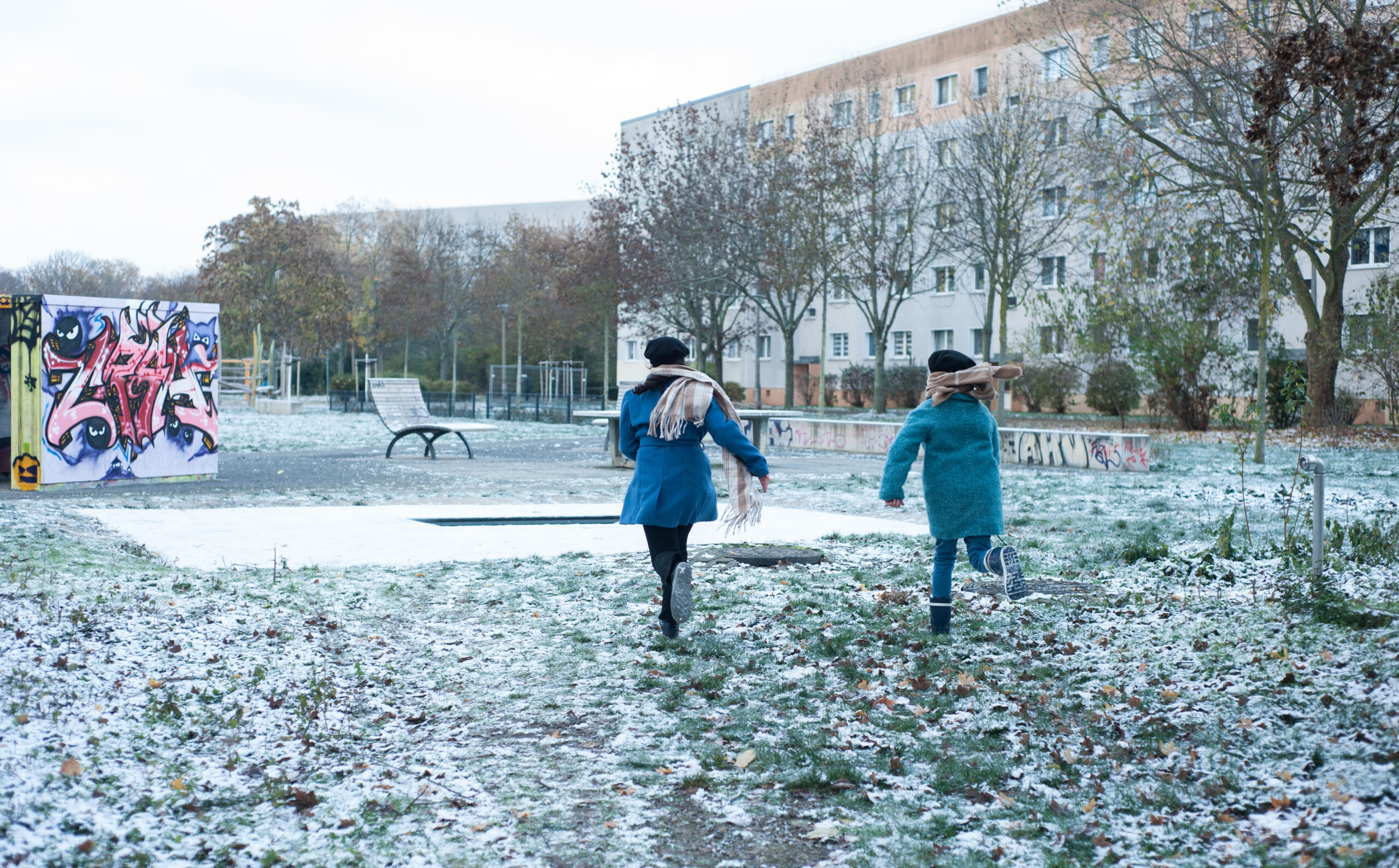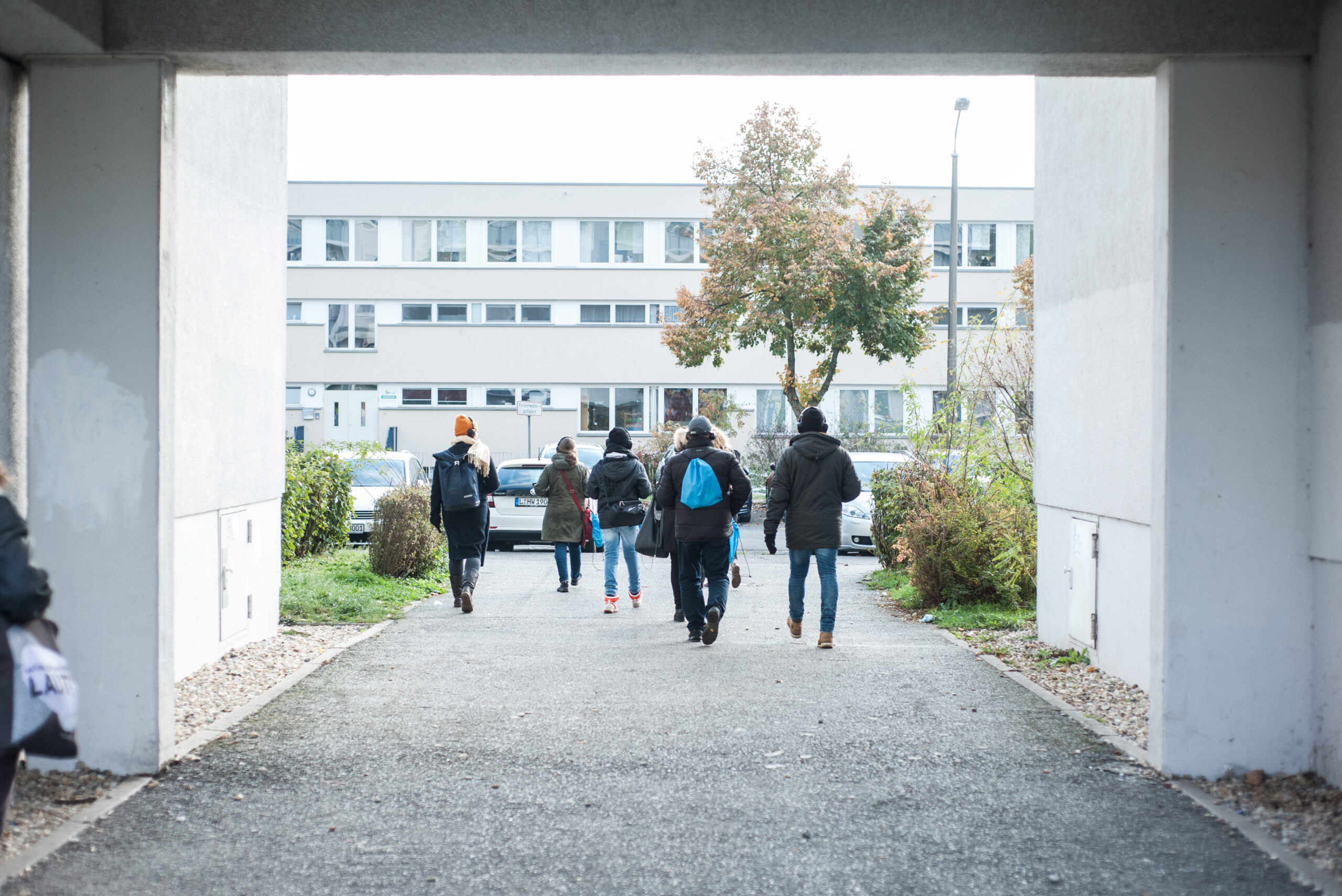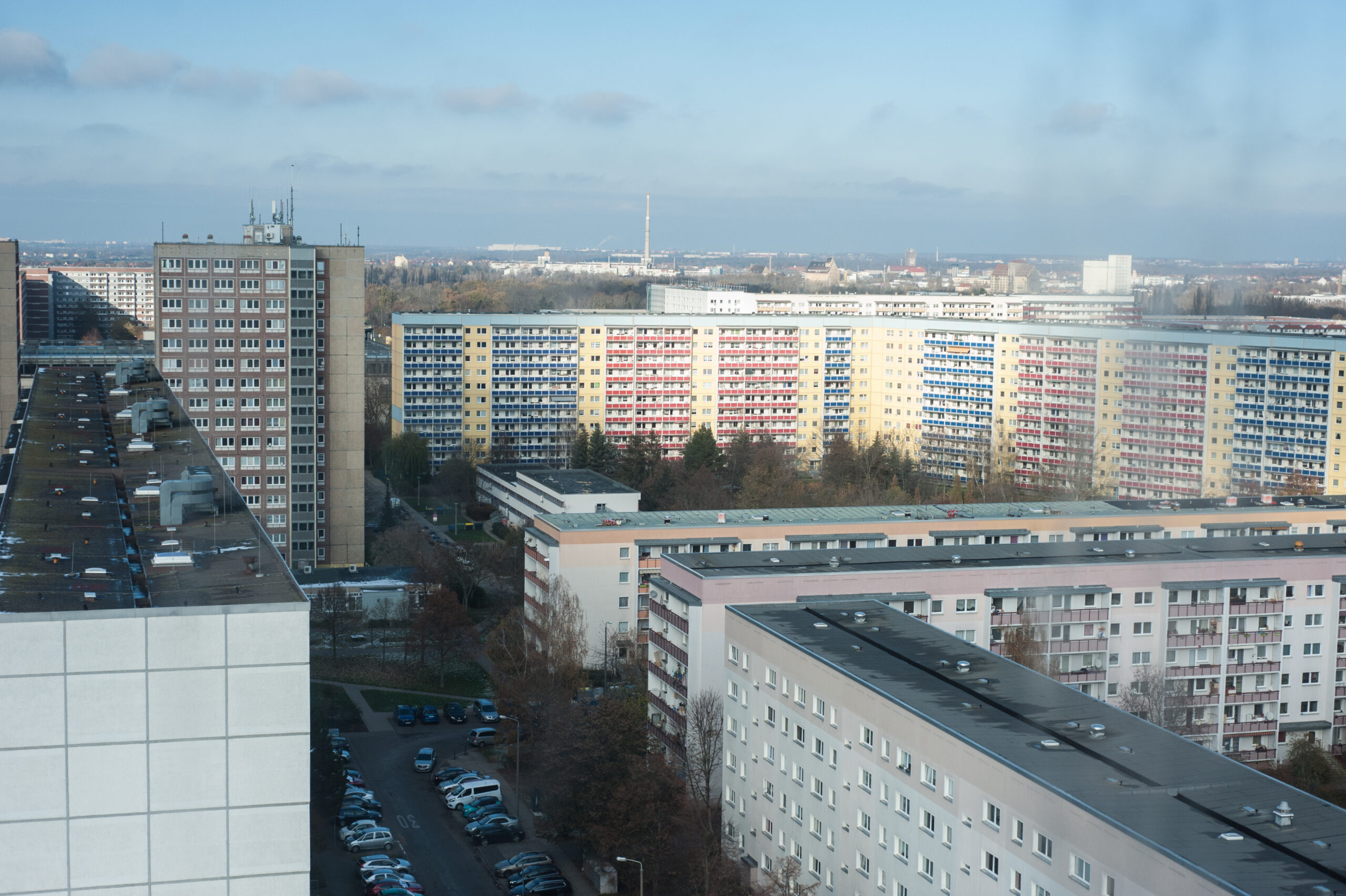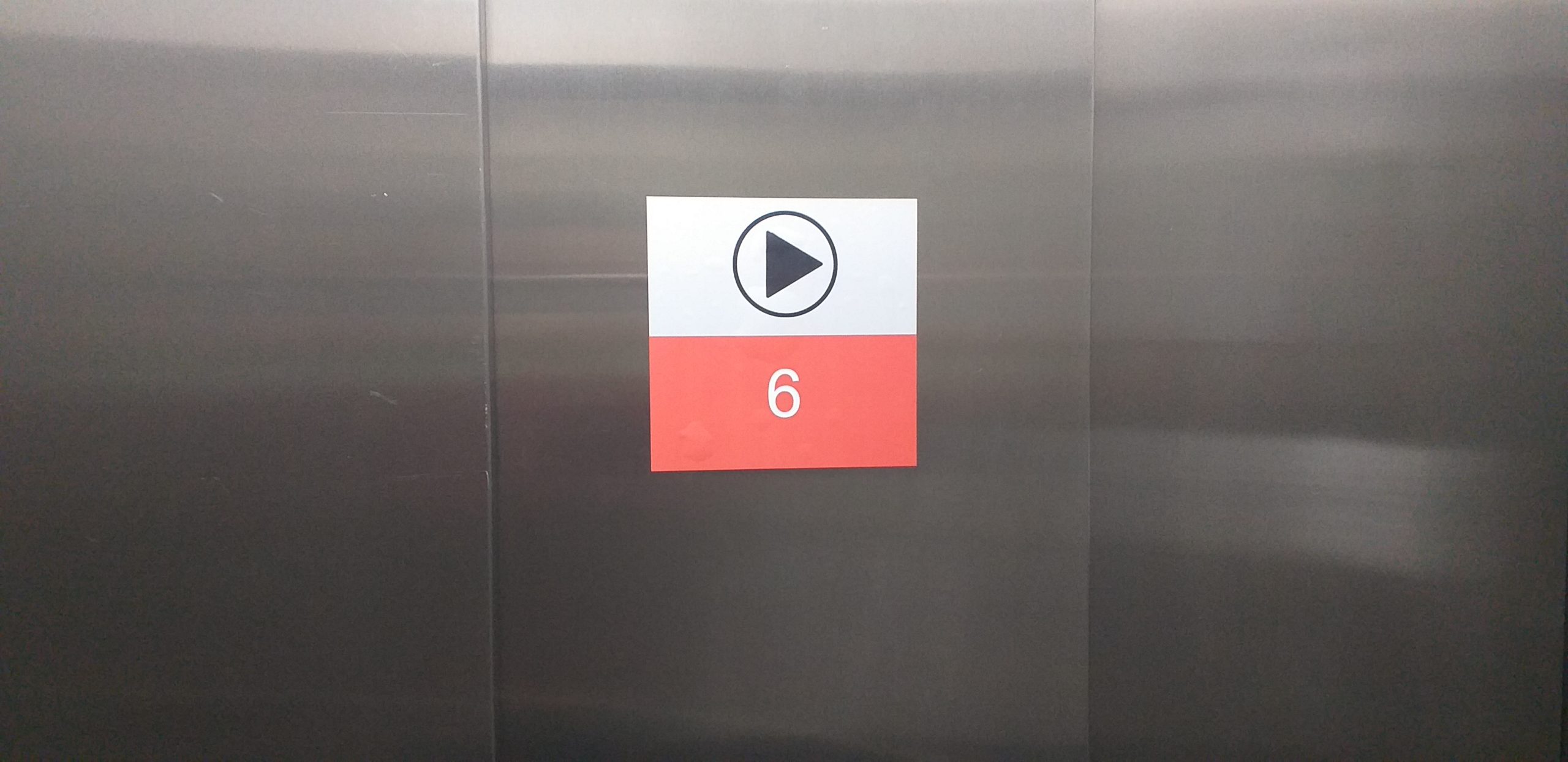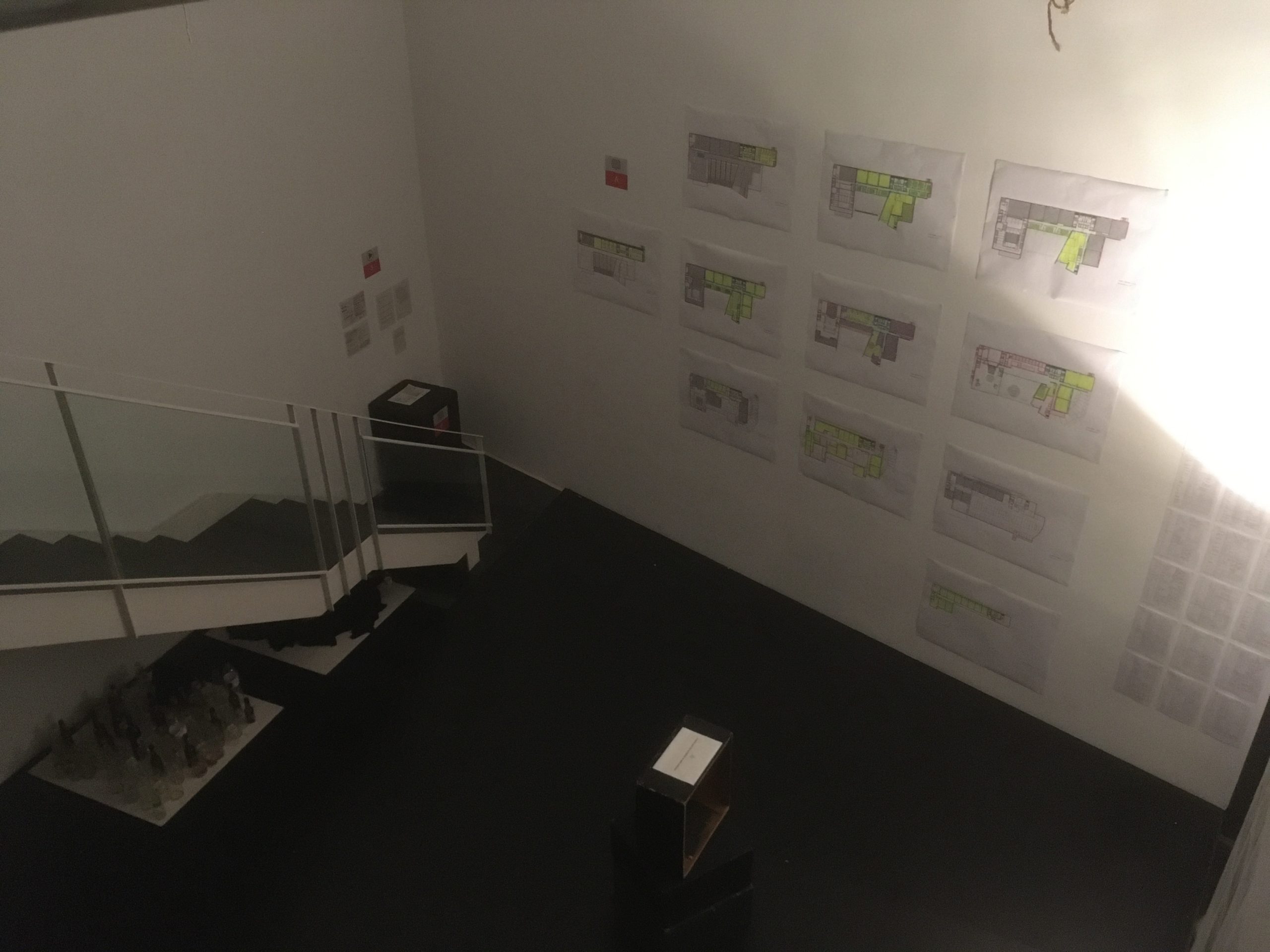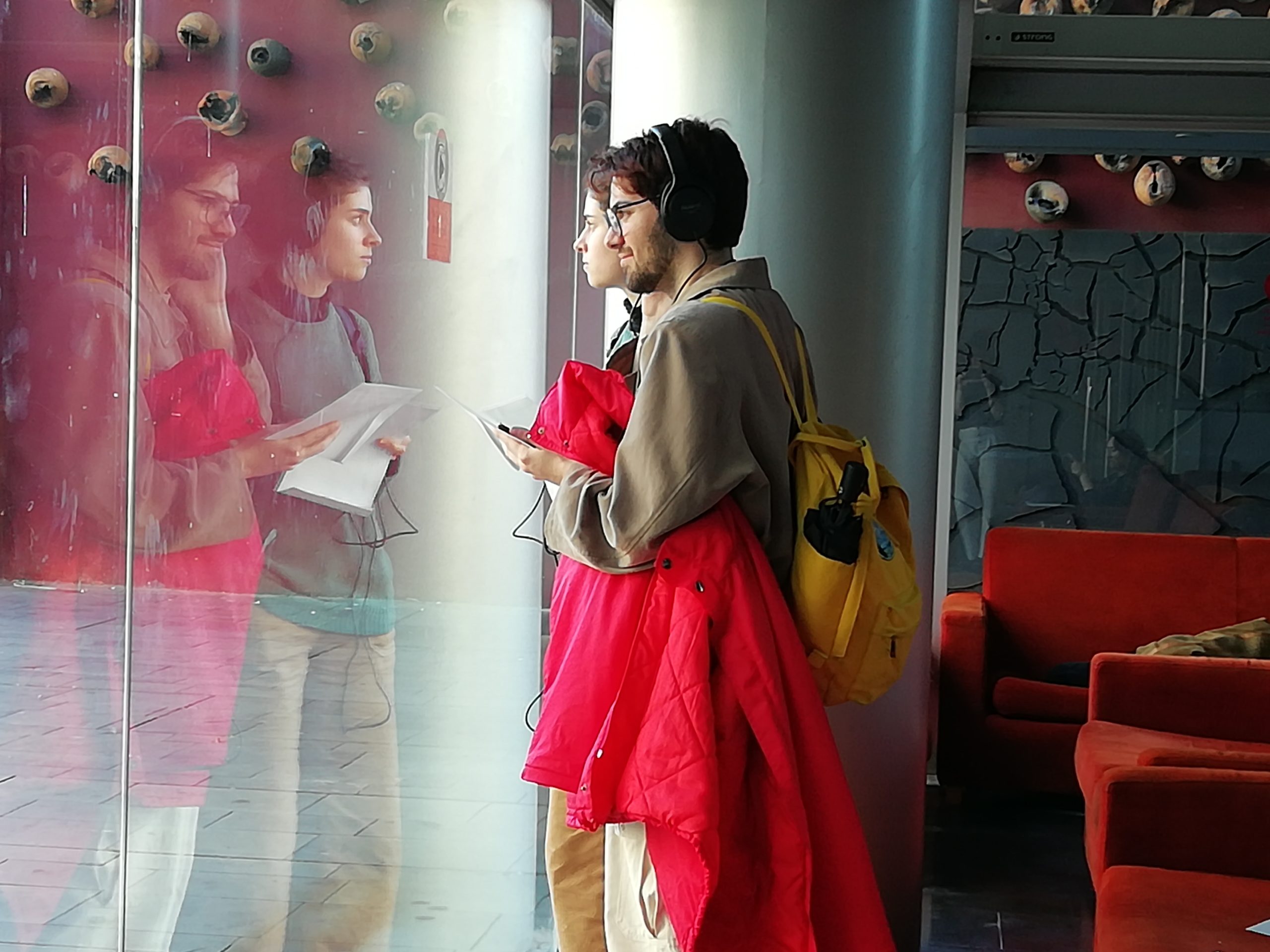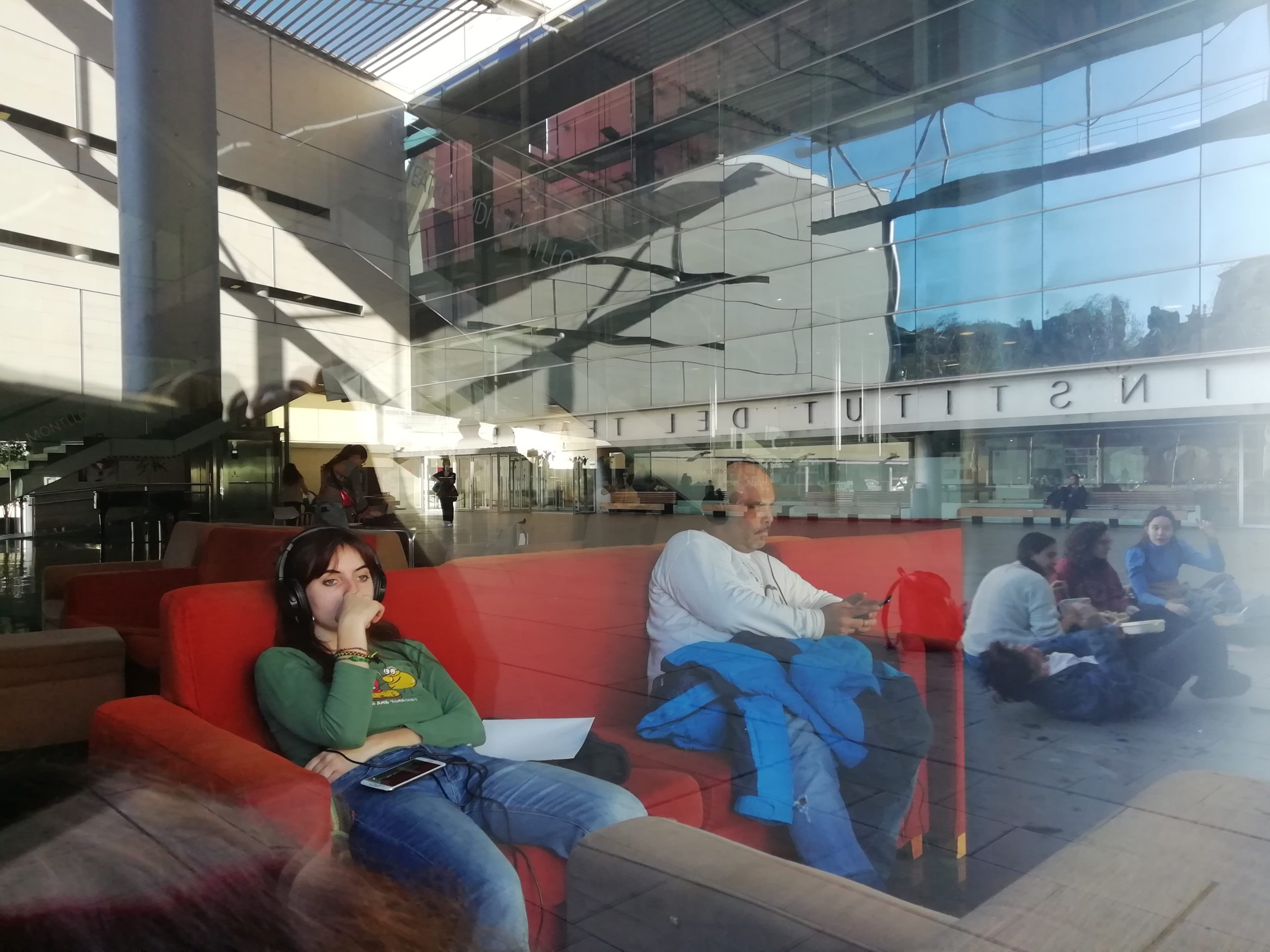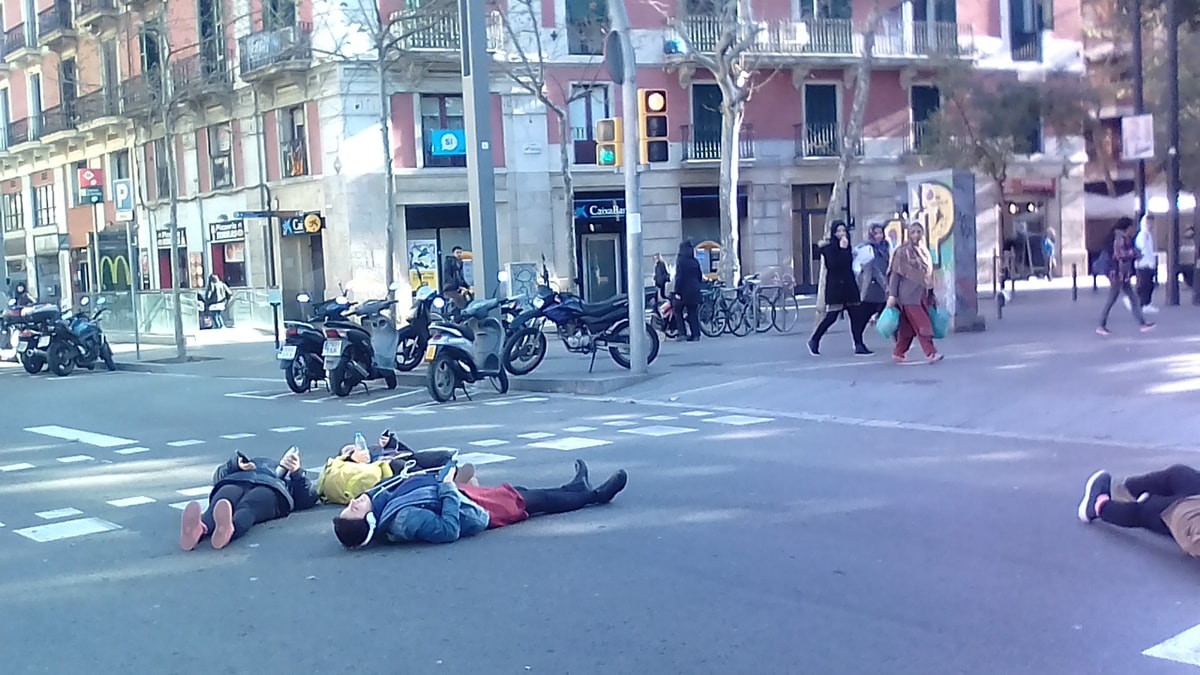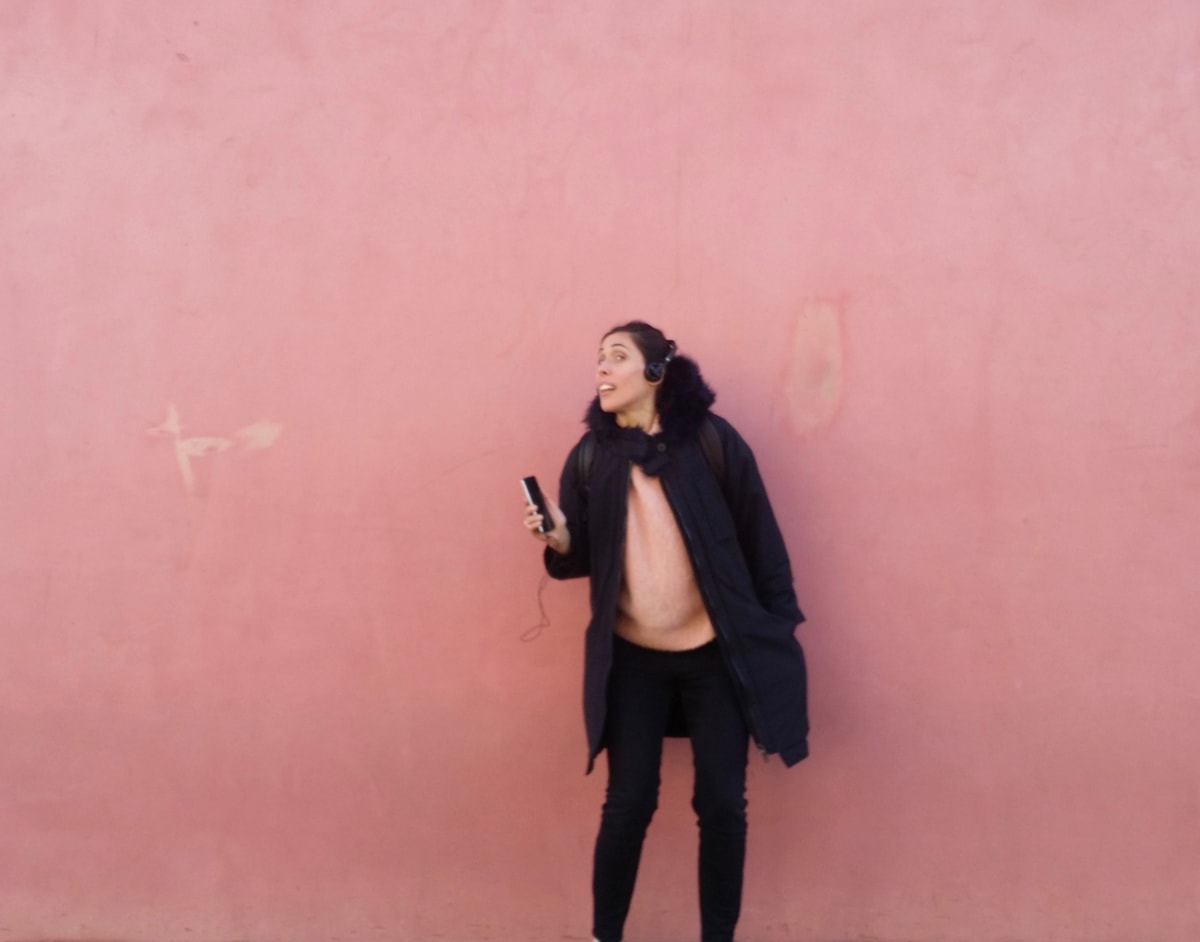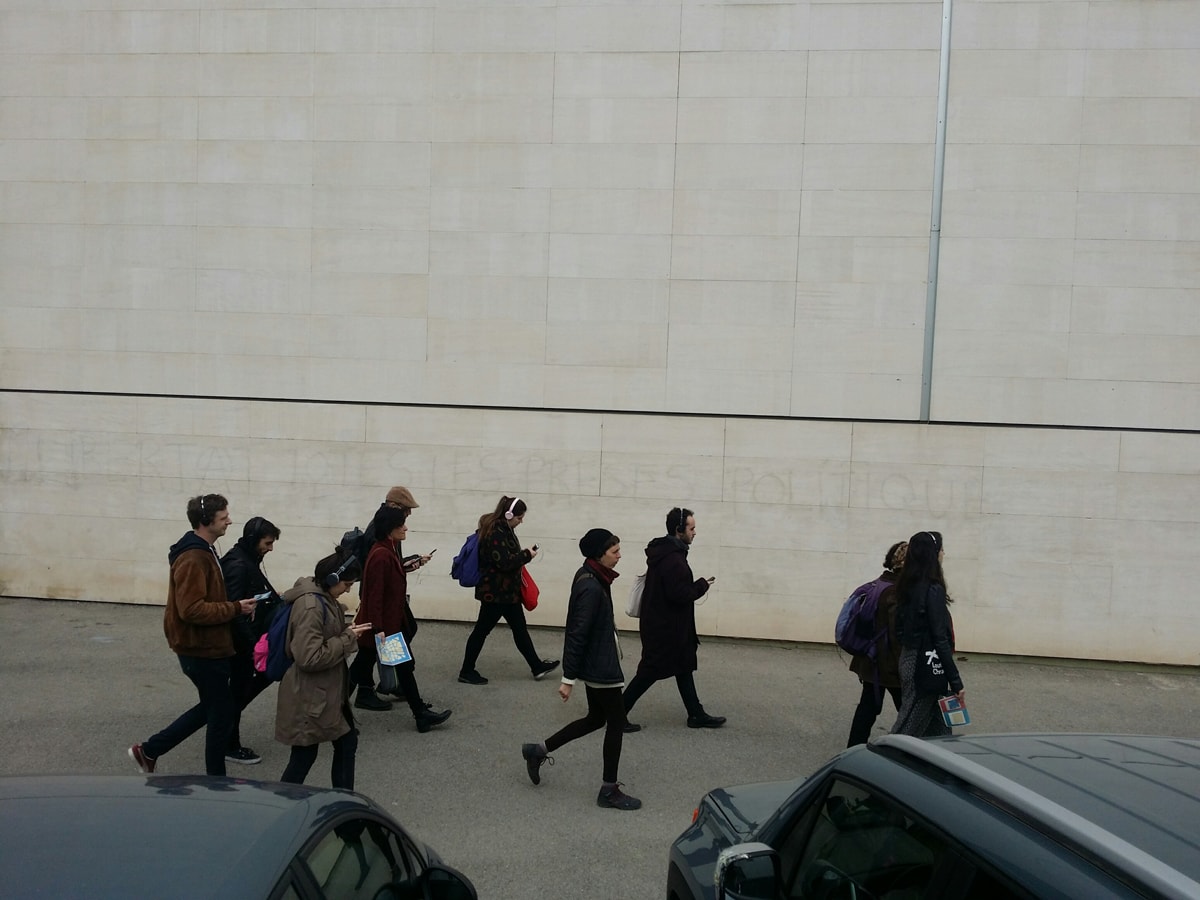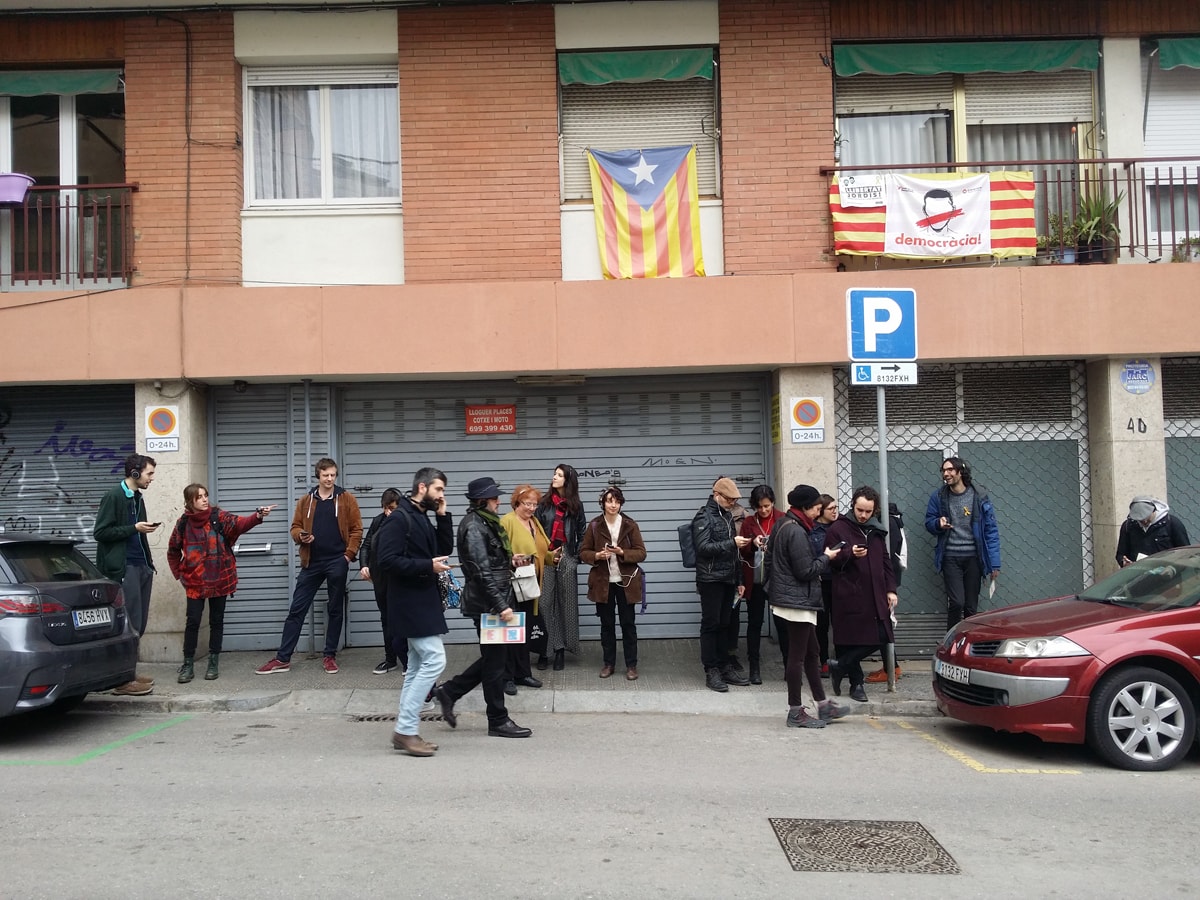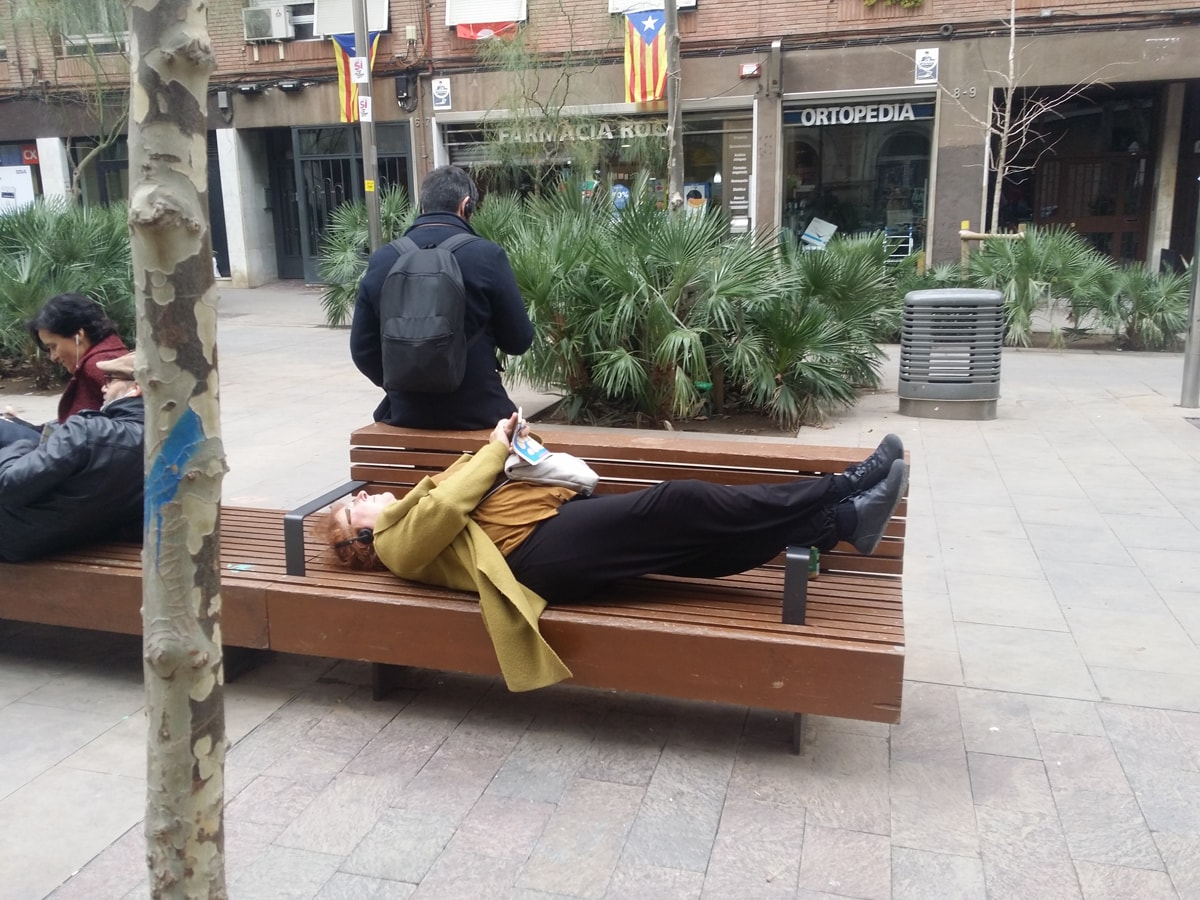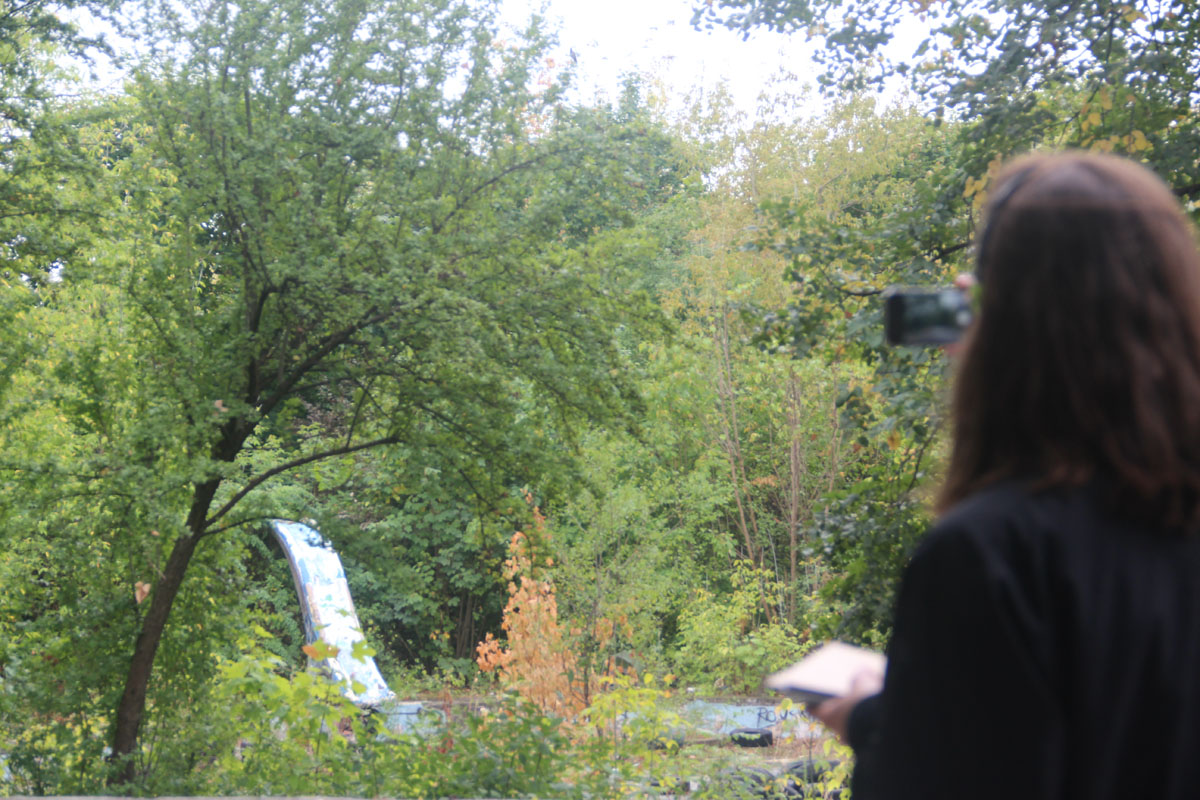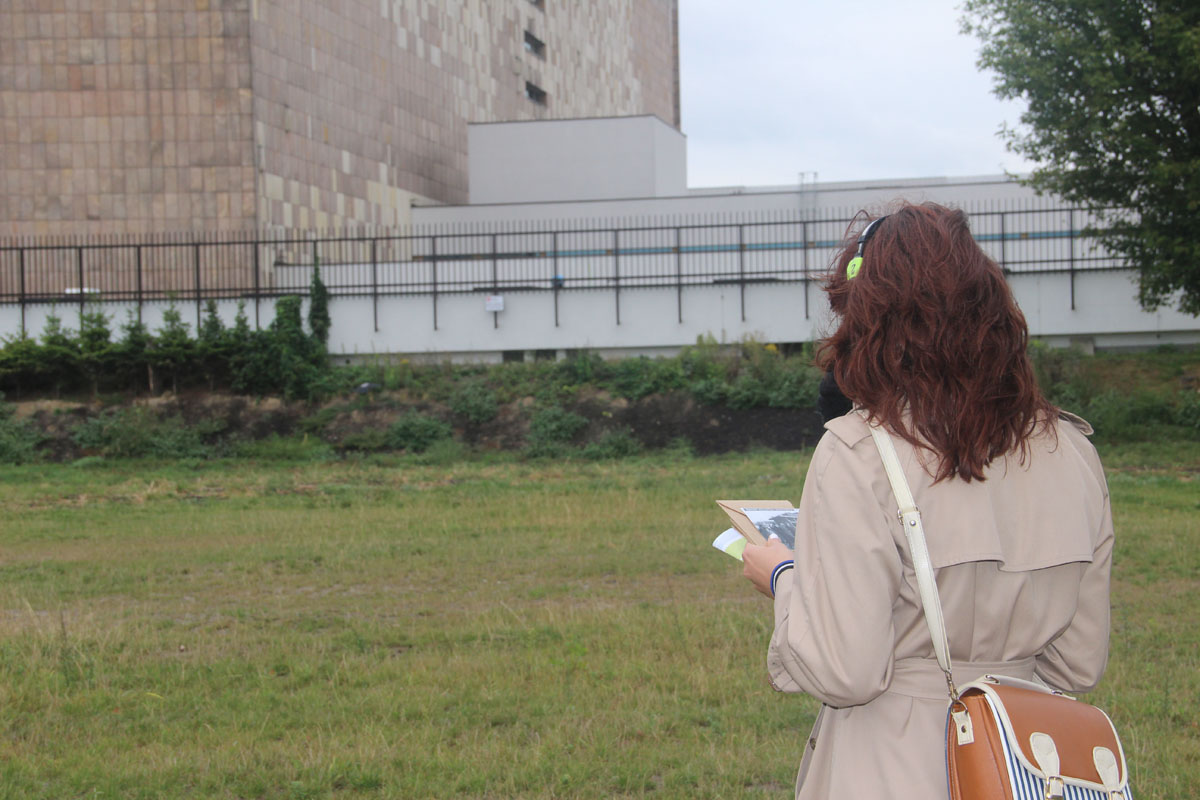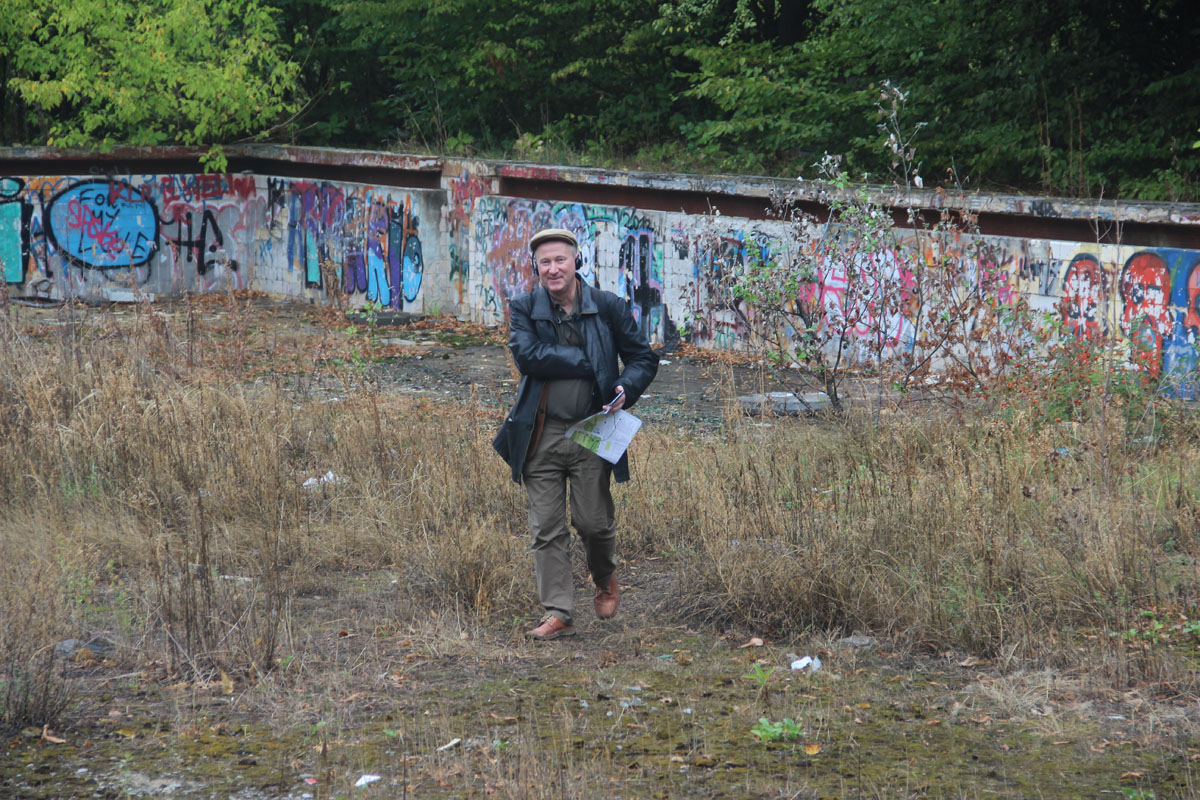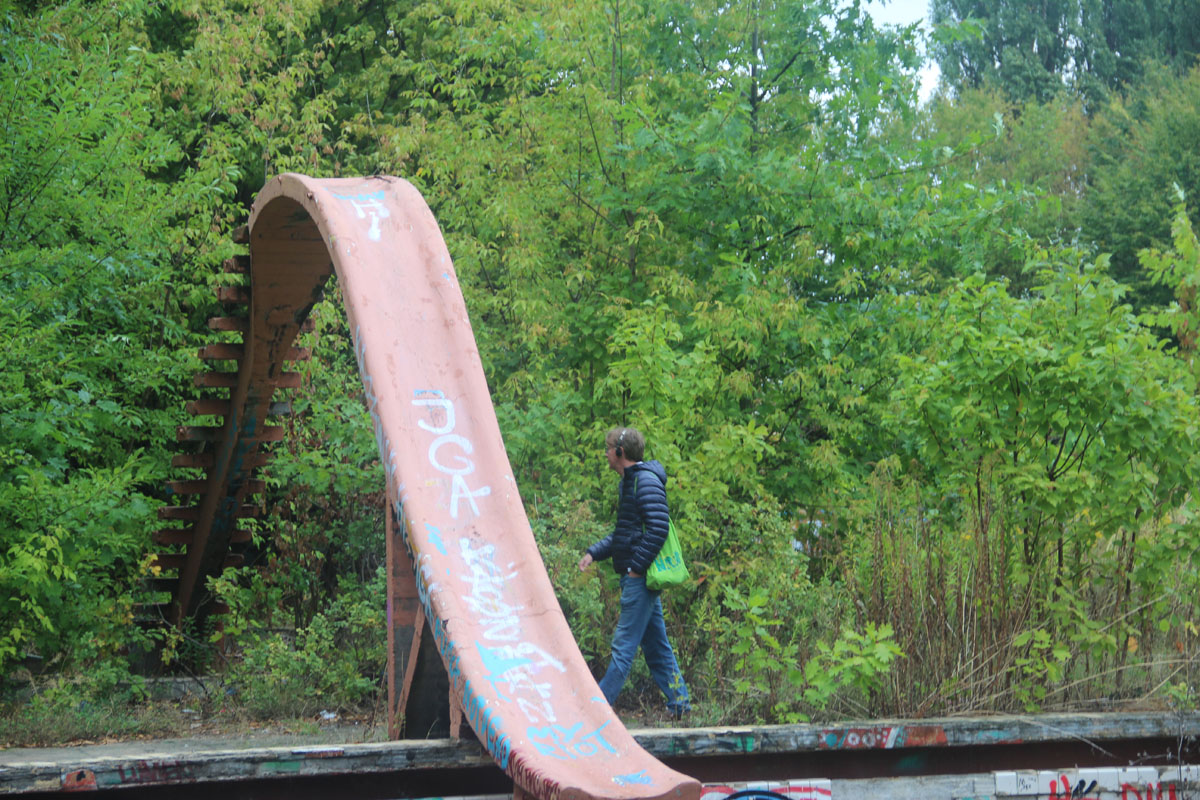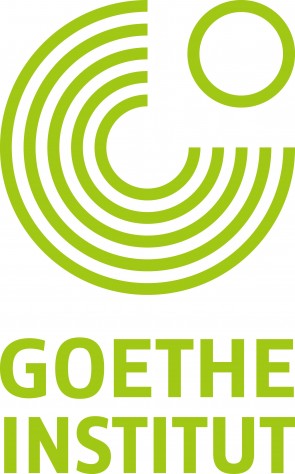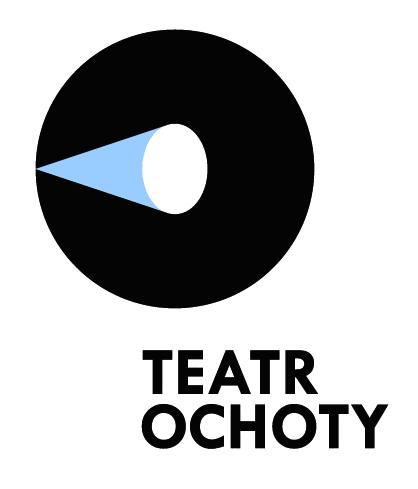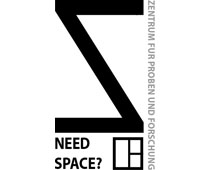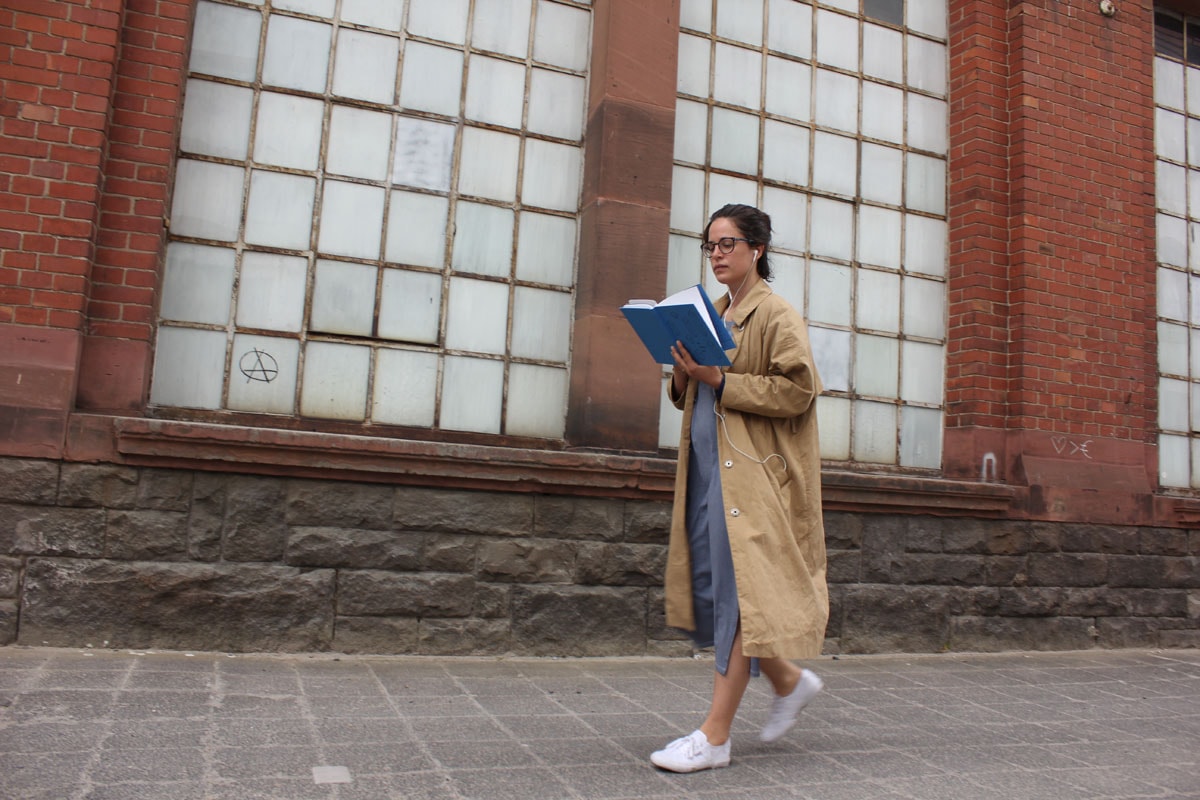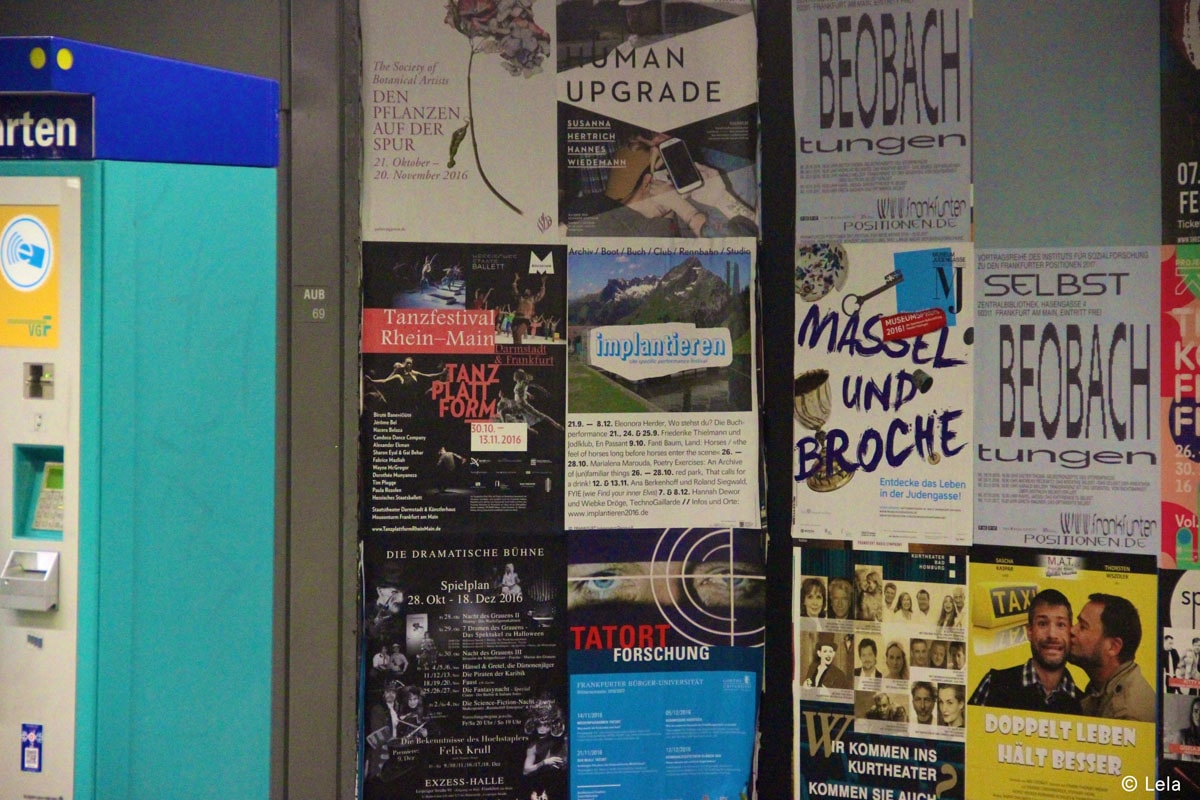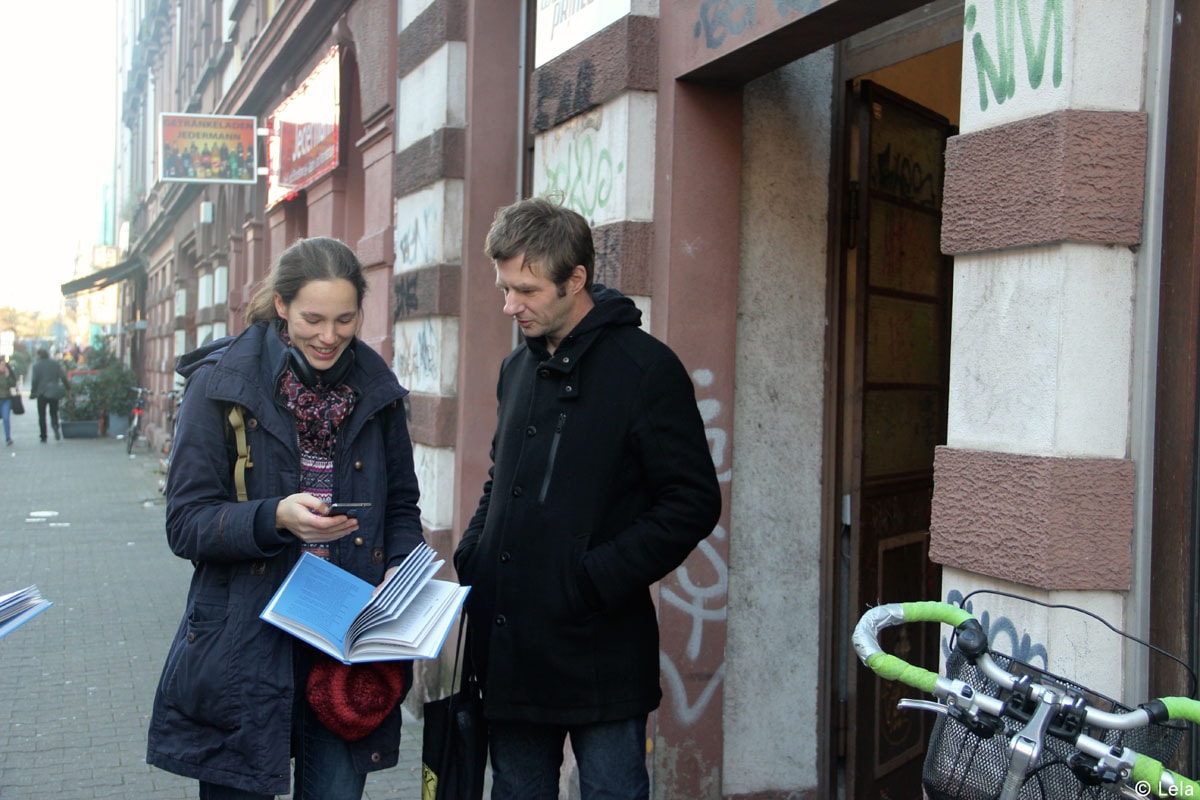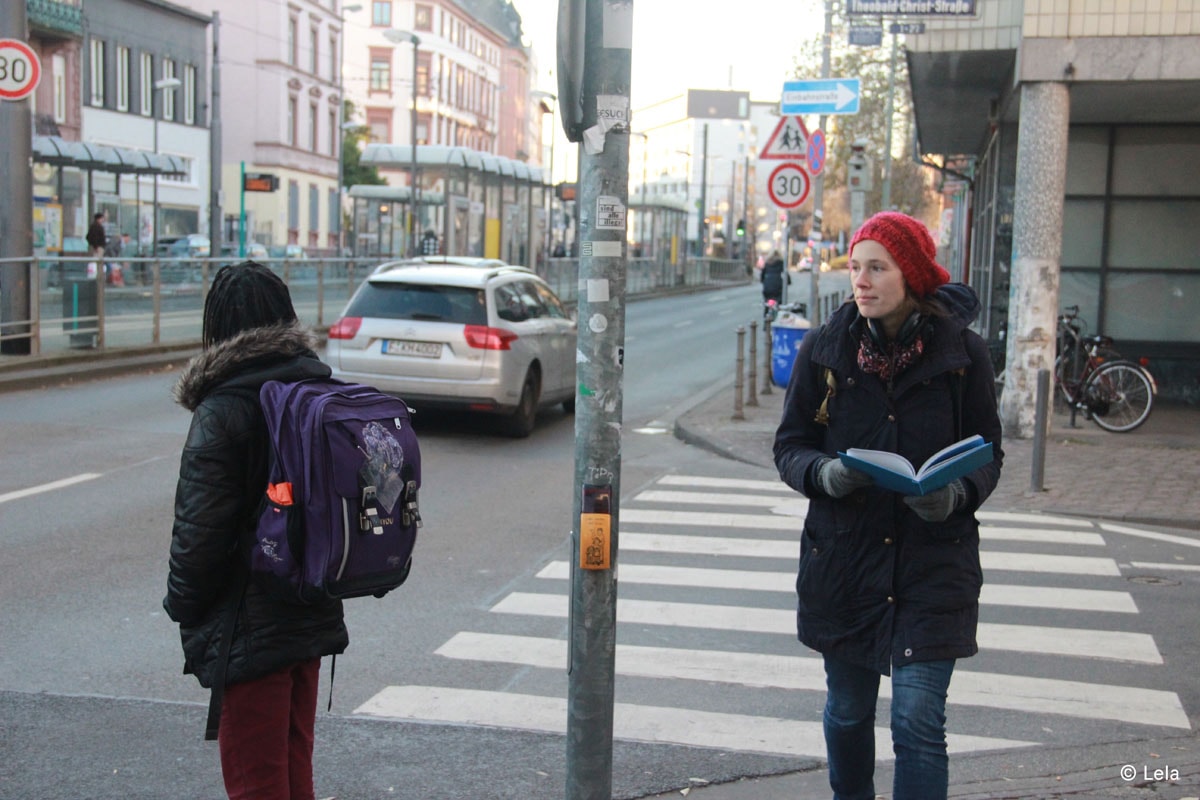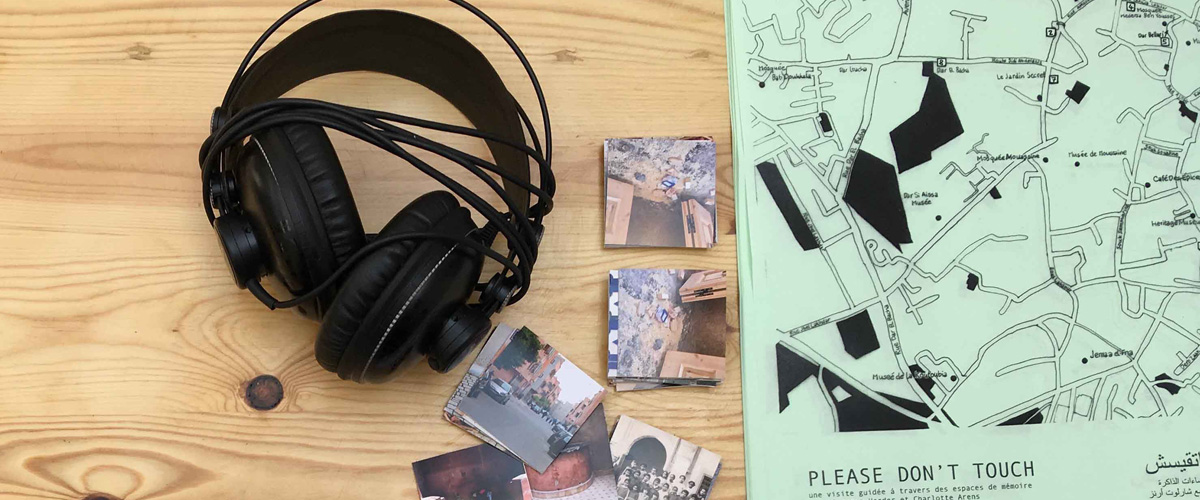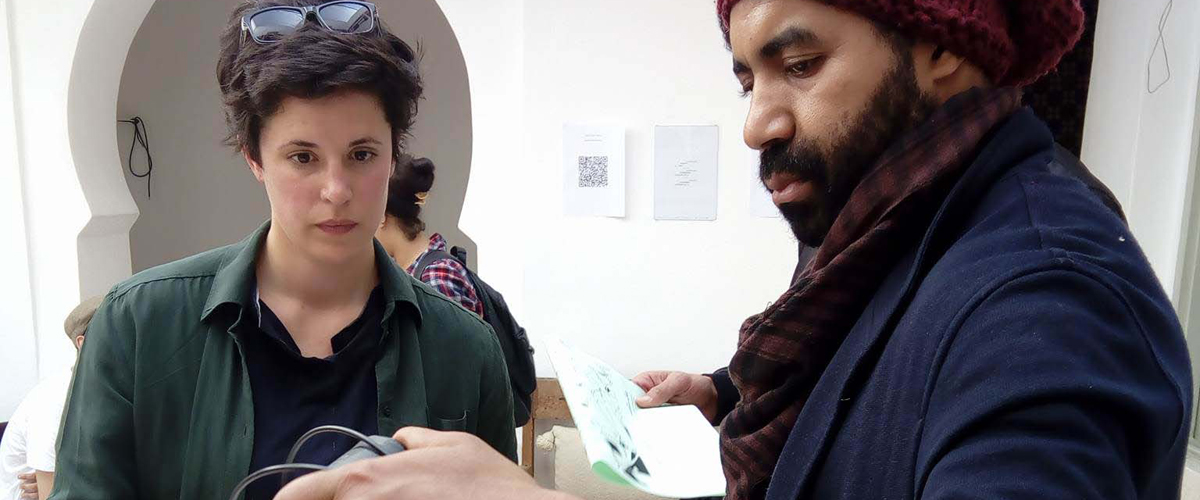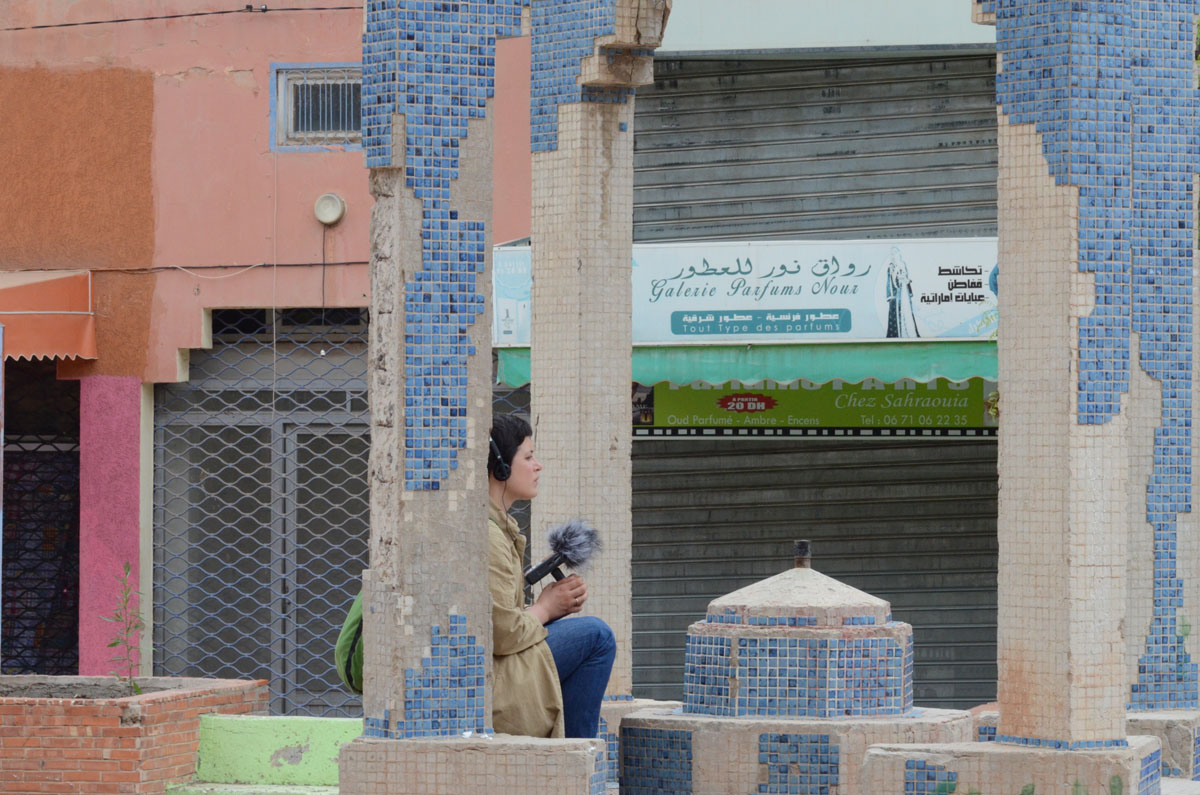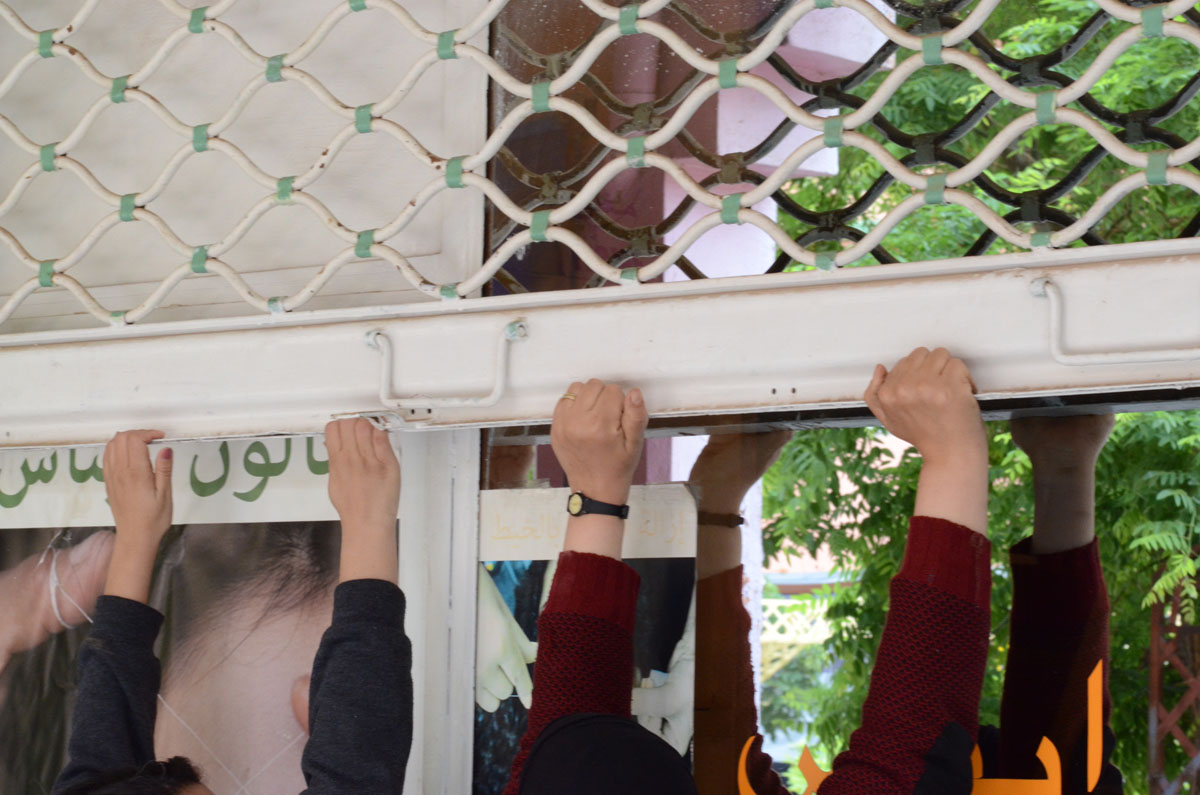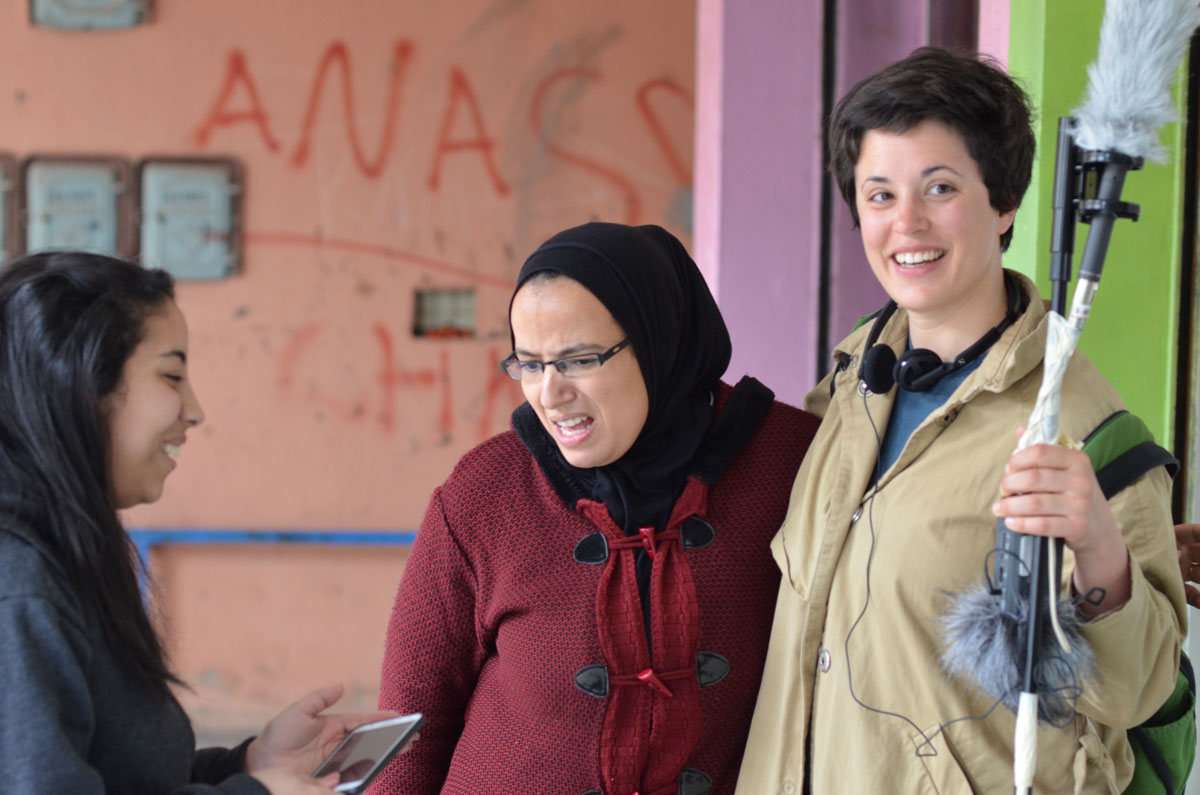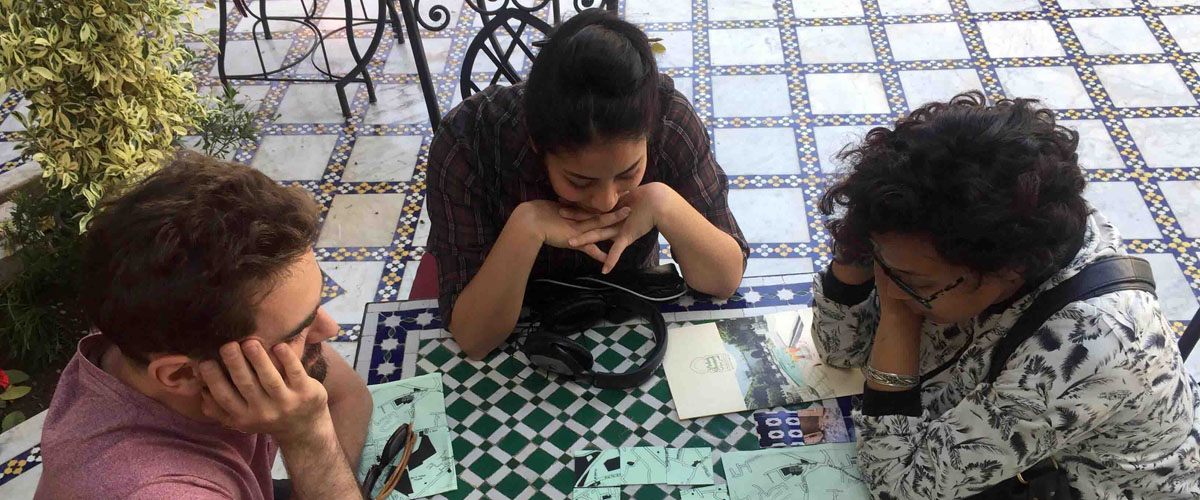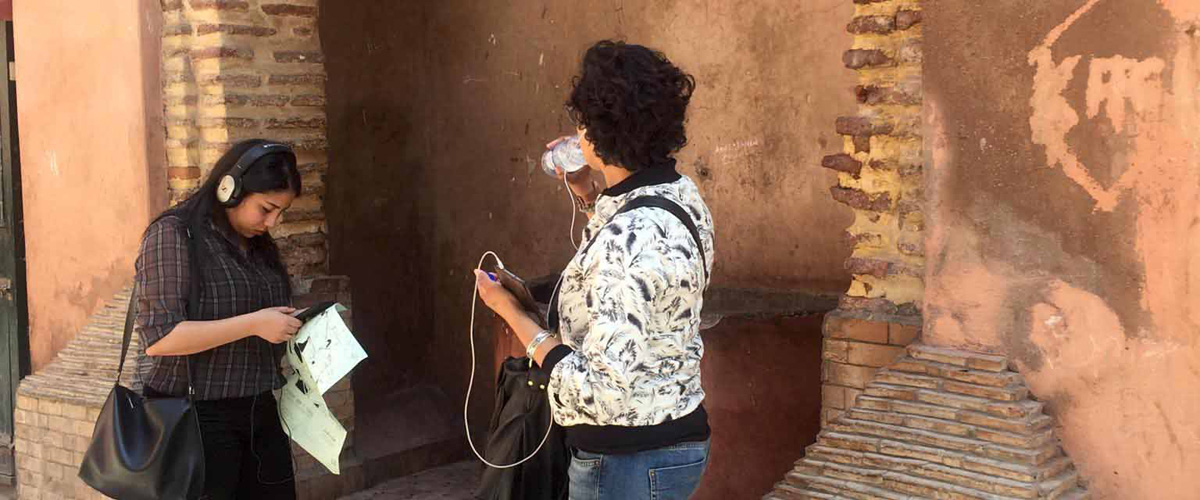copyright: Mim Schneider, 2022
Alles zieht vorbei
Videowalk | LOFFT – DAS THEATER (Leipzig)
Internationaler Tag der Kinderrechte
„Der Laternenpfahl da hinten schmeckt, wie wenn man sich auf die Lippe oder Zunge gebissen hat. Den darf man aber nur im Sommer anlecken. Im Winter bleibt man dran kleben.“
Zitat einer Bewohnerin in Grünau
Erinnerst du dich noch an die Zeit, in der du Ampeln auf grün schnipsen konntest? In der die Pfützen nach einem Sommergewitter große Seen waren und die Ritzen im heißen Asphalt geheime Zeichen – wenn man drauftritt, ist man sofort tot. Weißt du noch als du die Welt wegblinzeln konntest? Als du beim Schaukeln abheben und das ganze Viertel überfliegen konntest?
Ausgestattet mit Tablets und Kopfhörern, geleitet von einer kleinen Reiseführerin, ziehen andpartnersincrime mit dem Publikum durch die Großwohnsiedlung Grünau, suchen nach Schlupflöchern, Spielplätzen und Aussichtspunkten. Auf den Tablets ziehen Videos der Umgebung vorbei, werden dirigiert, verschieben sich. Wir sehen Bilder aus anderen Zeiten, hören verschiedene Gedanken zu diesem Ort.
Welche Teilhabemöglichkeiten haben Kinder, die hier aufwachsen, zwischen Plattenbauten, grünen Wiesen und Bänken aus Beton? Wie machen sie diesen Raum zu ihrem? Und wie könnte dieser Ort aussehen, wenn er sich ihren Bedürfnissen anpasst?
#TurnTheWorldBlue #kinderrechte

Letzten Sommer haben wir uns auf eine Recherchereise nach Grünau begeben – jenem Leipziger Stadtteil, der in den Siebzigern als großes Versprechen und moderner Wohnraum für alle erbaut wurde und heute als Platte und Problembezirk verschrien ist. Wir wollten herausfinden, wie es ist, hier aufzuwachsen, zwischen Plattenbauten, grünen Wiesen und Bänken aus Beton. Welche Teilhabemöglichkeiten haben Kinder in Grünau? Wie machen sie diesen Raum zu ihrem? Lassen sich kindliche Bedürfnisse und Systemarchitektur vereinen oder sprengen sie sich gegenseitig?
Mit all diesen Fragen im Gepäck sind wir immer wieder nach Grünau gefahren, haben uns mit verschiedenen Jugend- und Kulturzentren verbündet und so verschiedenste Grünau-Expert*innen zwischen 9 und 13 Jahren kennengelernt, die uns ihre Aneignungsstrategien des öffentlichen Raums verraten haben. Daraus ist ein Videowalk entstanden, der das Publikum raus aus dem Theater und rein in die Betonlabyrinthe Grünaus führt. Geleitet von unterschiedlichen kleinen Guides ziehen die Zuschauer*innen durch den Stadtteil, suchen nach Schlupflöchern, Spielplätzen und Aussichtspunkten. Dabei werden sie angeregt, ihre Umgebung wieder mit den Augen eines Kindes zu sehen und sich zu erinnern, wie das war, damals, als sie alle Ampeln auf grün schnipsen konnten. Als die Pfützen nach einem Sommergewitter Badeseen waren und die Ritzen im heißen Asphalt geheime Zeichen. Als sie noch mit der Tram bis zum nächsten Geburtstag fahren konnten, damit er schneller kommt. Also steigt ein, wir treffen uns am 20. November!
Darstellerinnen Live Performance: Sinem Dinara Hartmann, Kira-Katharina Zimmermann
Voice-Over: Miriam Klüh
DARSTELLER*INNEN IM FILM:
Guides: Sinem Dinara Hartmann, Malou Löffler, Ben Zeisler, Kira-Katharina Zimmermann
Reporter*innen: Sinem Dinara Hartmann, Malou Löffler, Ben Zeisler, Kira-Katharina Zimmermann
Natalie Hadarie, Anna Döhler, Finja Döhler, Timmy Eggert, Emilia Ehrenberg, Josephine Etumunu, Sinem Dinara Hartmann, Anton Hermann, Raciel, Carlos Ros, Fanny Schreiber, Saskia Schürmeier, Alina Stäbler, Oskar Stäbler, Diana Sulaimani, Anna Sophie Ulrich, Emily Wende
Künstlerische Leitung: Eleonora L. Herder
Dramatugry: Nele Beinborn
Videodesign + Videoproduktion: Jos Diegel
1. Kamera: Jos Diegel
2. Kamera: Michelle Koprow
Schnitt: Jos Diegel, Michelle Koprow
Ausstalttung: Michelle Koprow
Sounddesign + Musik: Jonas Harksen
Produktionsdramaturgie: Sarah Charlotte Becker
Choreografie der Tanzszenen im Film: Johanna Uhle, Mechthild Schade
Pädagogische Betreuung: Marika Fleischhauer, Marie Molle, Paul Illner, Josefine Bartl
Creative Producer: Sven Rausch
Eine Produktion von andpartnersincrime in Koproduktion mit LOFFT – DAS THEATER. In Zusammenarbeit mit dem Jugendzentrum Heizhaus in Leipzig-Grünau, dem Theatrium (großstadtKINDER e.V.), dem Offenen Freizeittreff Völkerfreundschaft e.V. und den Leipziger Verkehrsbetrieben LVB. Gefördert von der Stadt Leipzig – Kulturamt und vom Fonds Darstellende Künste aus Mitteln der Beauftragten der Bundesregierung für Kultur und Medien im Rahmen von NEUSTART KULTUR. andpartnersincrime erhält eine Mehrjahresförderung der Stadt Frankfurt am Main.

20. November 2022, 11 Uhr | 12:30 Uhr | 14:00 Uhr | 15:30 Uhr
-> Weitere Aufführungen im September 2023 in Planung! More Infos coming soon.
Startpunkt: LOFFT – DAS THEATER, Spinnereistraße 7/Halle 7, 04179 Leipzig
Endpunkt: OFT Völkerfreundschaft, Stuttgarter Allee 9, Grünau-Mitte
Dauer: 90 Minuten
